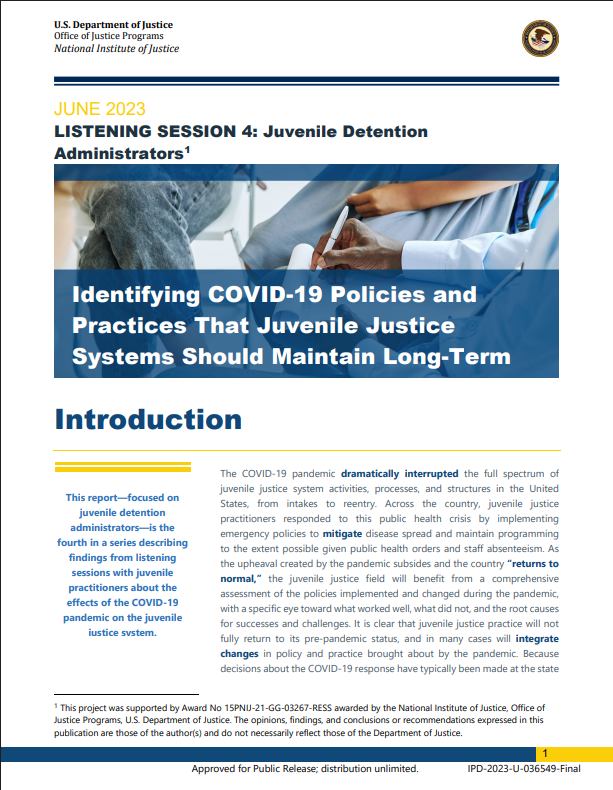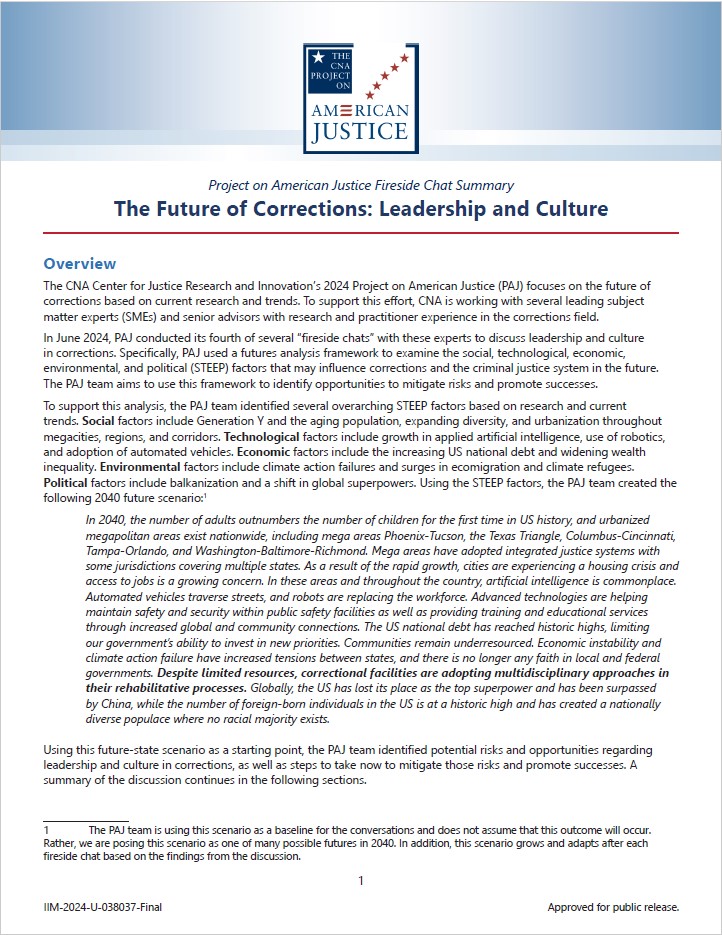Introduction
Combating violent crime ranks among the Department of Justice’s top priorities to improve community safety. Numerous law enforcement and criminal justice strategies target violent crime and gang violence, including both place- and person-based approaches. However, few of these strategies have been evaluated using the most rigorous of research designs, the randomized controlled trial (RCT). The current study helps to fill this gap by using an RCT to evaluate a focused deterrence program operated by the St. Louis, Missouri, Metropolitan Police Department (SLMPD) and the Missouri Department of Corrections (MODOC): the St. Louis Police Partnership.
In fall 2016, the SLMPD and the St. Louis offices of MODOC’s Division of Probation and Parole entered into a partnership to monitor and facilitate service delivery to persons under probation or parole supervision at high risk for gun-related crimes (hereafter the Police Partnership). The Police Partnership is centered on face-to-face meetings in which a police officer and community corrections officer meet with a probationer or parolee who has committed a firearm-related offense. The meetings typically last between 15 and 30 minutes, and most meetings are held in the participant’s home, with the remainder held in a probation and parole office, at the participant’s place of employment, or via phone or video (the meetings are referred to hereafter as “home visits”). This evaluation focuses on meetings held since June 2020, when the National Institute of Justice began funding an evaluation of the program’s effectiveness in reducing criminal activity and increasing prosocial outcomes such as education, training, employment, and drug treatment. A total of six police officers, including replacements, have been involved with the program since its beginning. The Police Partnership continues to date.
St. Louis is a strategically important site for this evaluation because it faces a critical problem of criminal violence, particularly firearm-related violence. In 2016, the year the Police Partnership began, the St. Louis homicide rate of nearly 60 per 100,000 city residents was the highest among the nation’s cities (Mirabile and Nass, 2018) and approximately five times greater than the average rate for cities of comparable size. In 2016, 92 percent of St. Louis homicides were committed with a firearm (Metropolitan Police Department, City of St. Louis, 2016). St. Louis’s rate of total violent crime (homicide, aggravated assault, rape, and robbery) was more than two-and-a-half times the rate in cities of similar size. The St. Louis violent crime rate of 1,913.2 crimes per 100,000 residents exceeded the rate in other cities confronting serious violent crime problems, including Baltimore (1,780.4), New Orleans (1,069.7), and Chicago (1,105.5). In 2016, 59 percent of aggravated assaults, the largest category of violent crime in St. Louis, were committed with a firearm (Metropolitan Police Department, City of St. Louis, 2017) . Firearm violence persists as a major public problem in St. Louis.
Download reportApproved for public release. Unlimited distribution.
Details
- Pages: 41
- Document Number: IRM-2023-U-037273-Final
- Publication Date: 4/1/2024





